A strategic plan is a management tool that describes the goals of an organization and functions as a comprehensive guideline that details the necessary sequence of events or actions required to accomplish the specified objectives.
It provides a clear path for an organization to follow in progressing from a current situation to a desired one over a specified timeline. This plan is necessary to fully actualize an organization’s model by identifying what it hopes to achieve and how to achieve it.
By the precise specification of objectives and goals, the level of progress towards the desired outcome is effectively measured and qualified by the attainment of set goals. The predefined pathway to a successful outcome specified in a strategic plan provides a strict course, which, if maintained, should result in the attainment of the predefined outcome or an approximation of it.
This article provides you with the steps to make it work perfectly, along with free customizable templates. But first, let us get a basic concept of what it is and how it can benefit us:
Pre-Designed Templates
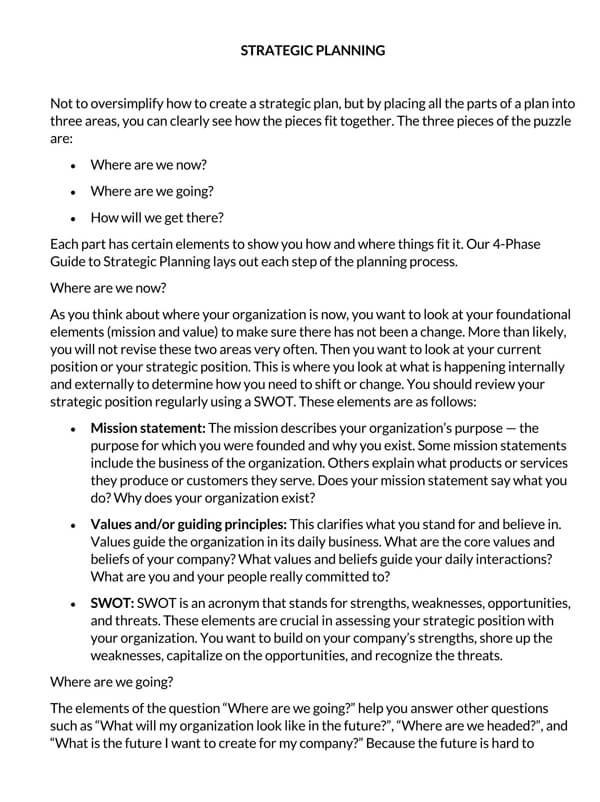
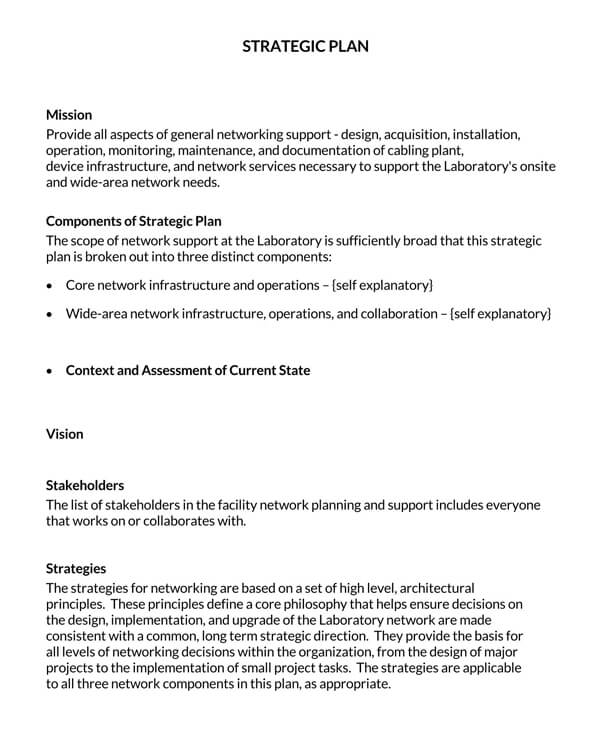
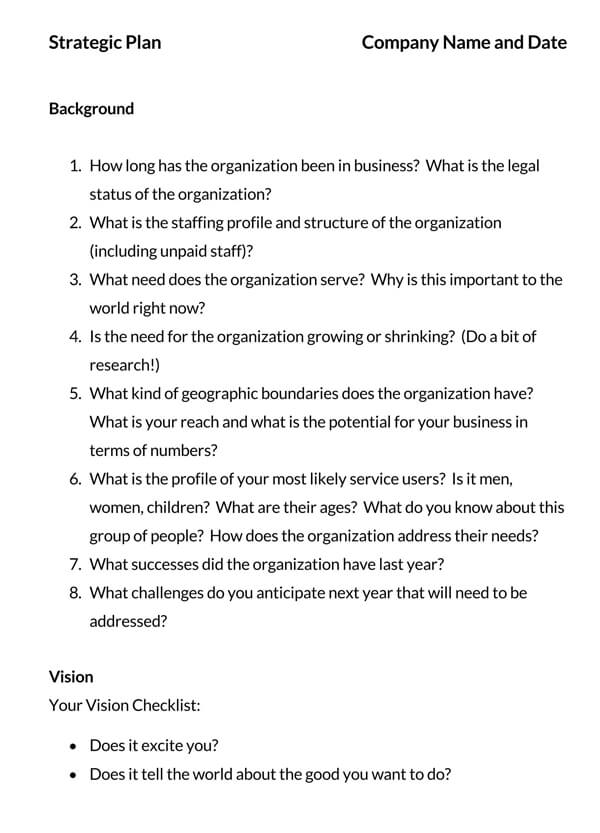
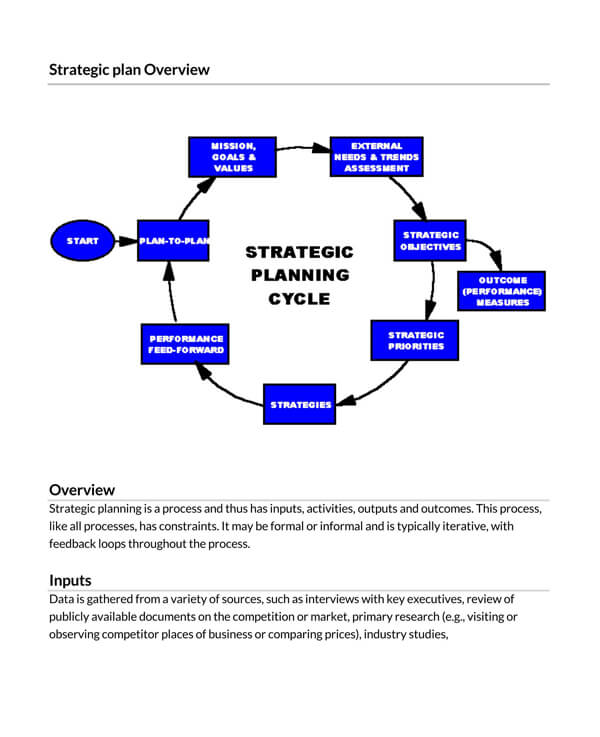
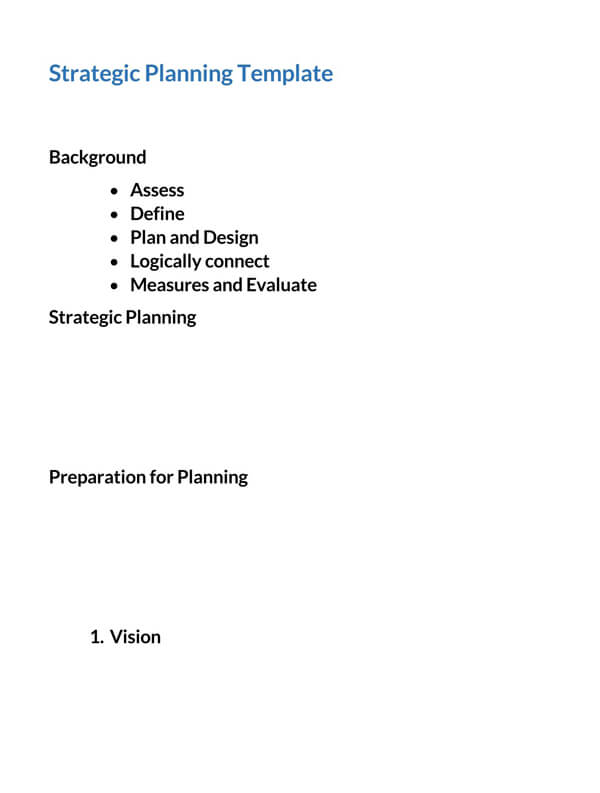
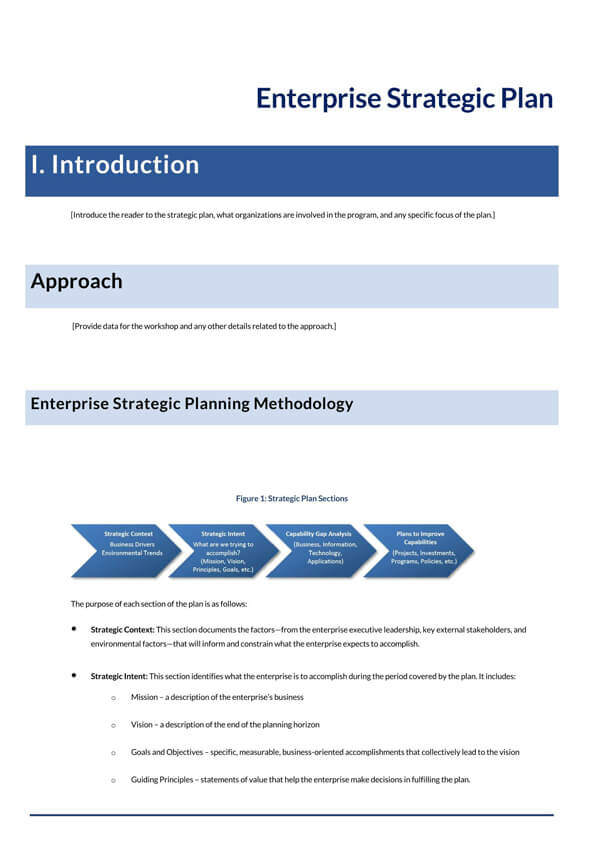
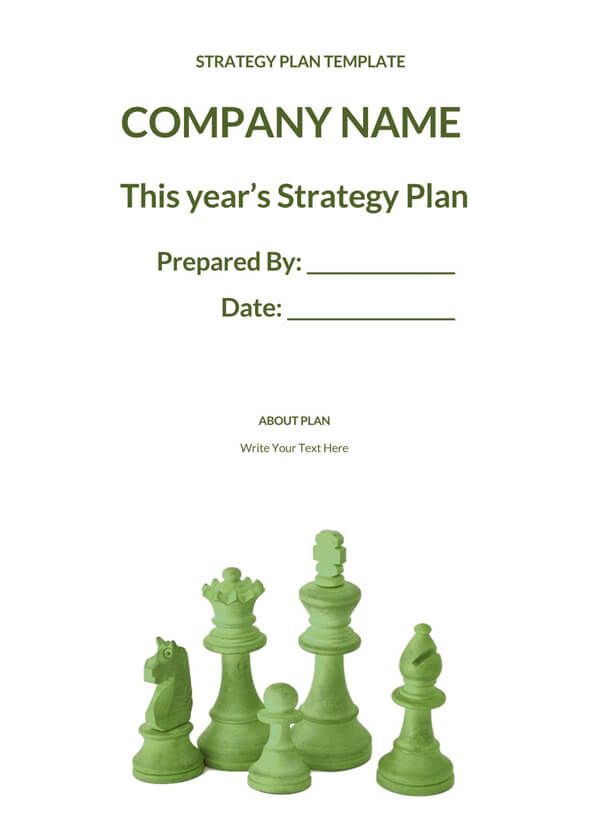
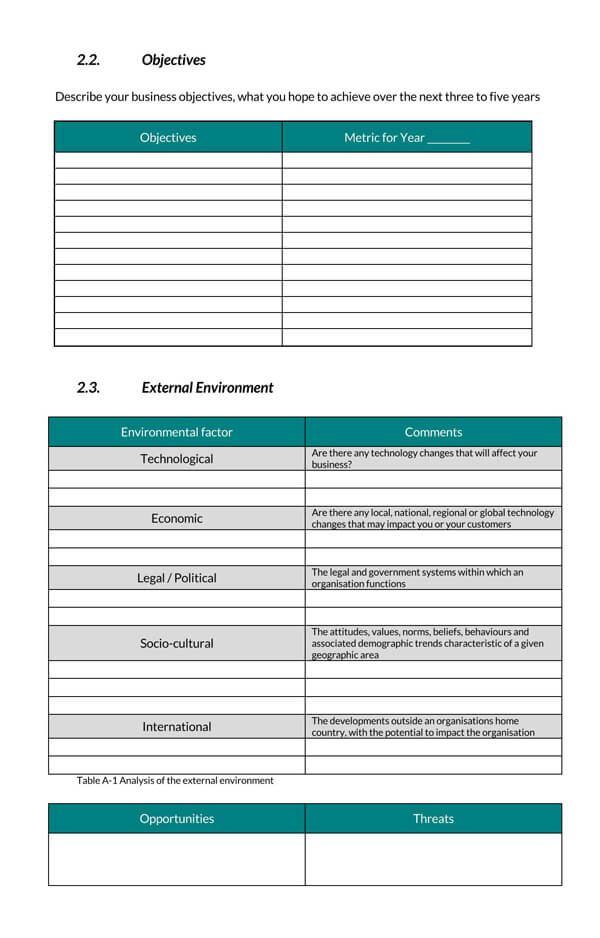
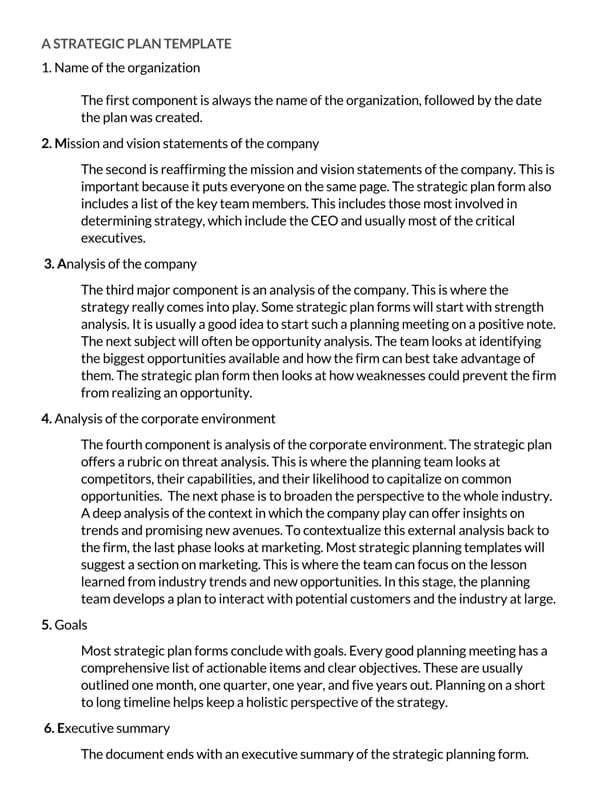
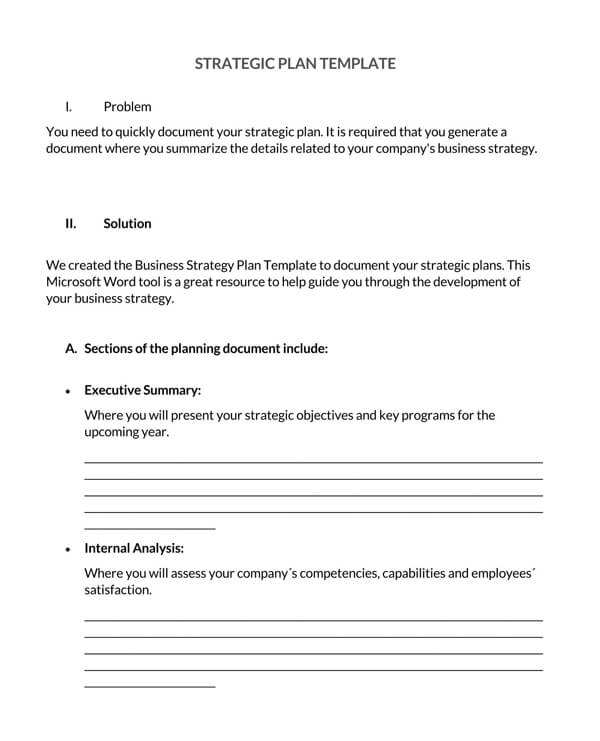
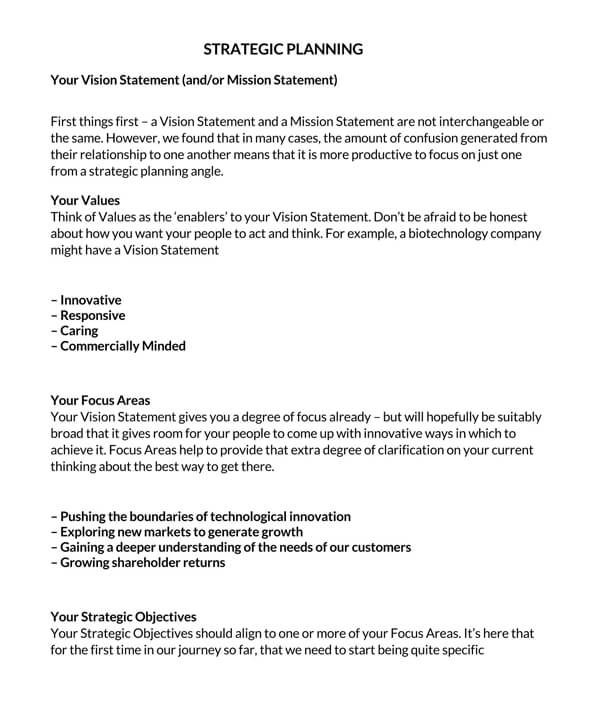
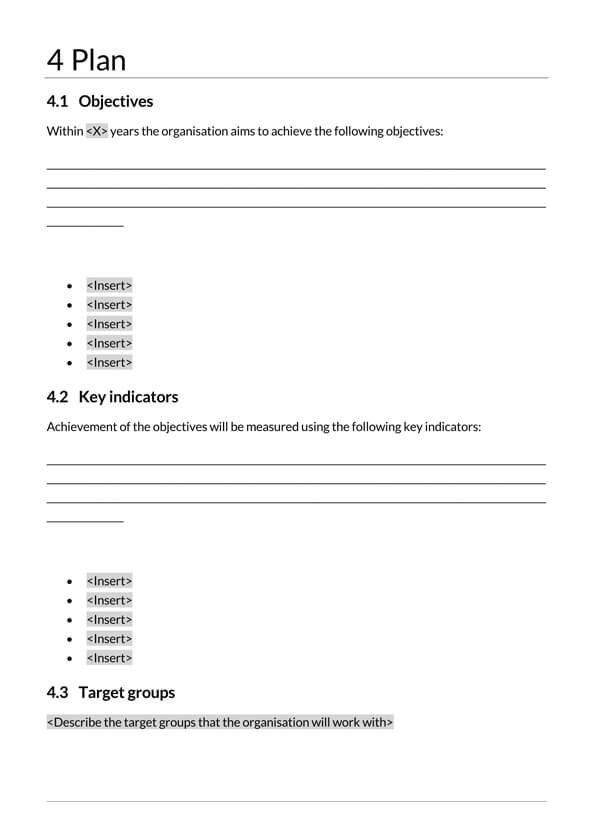
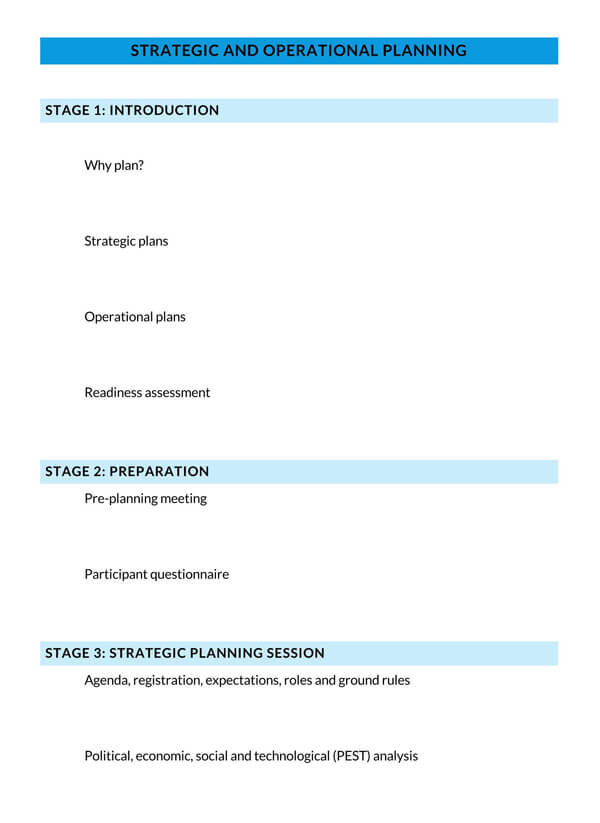
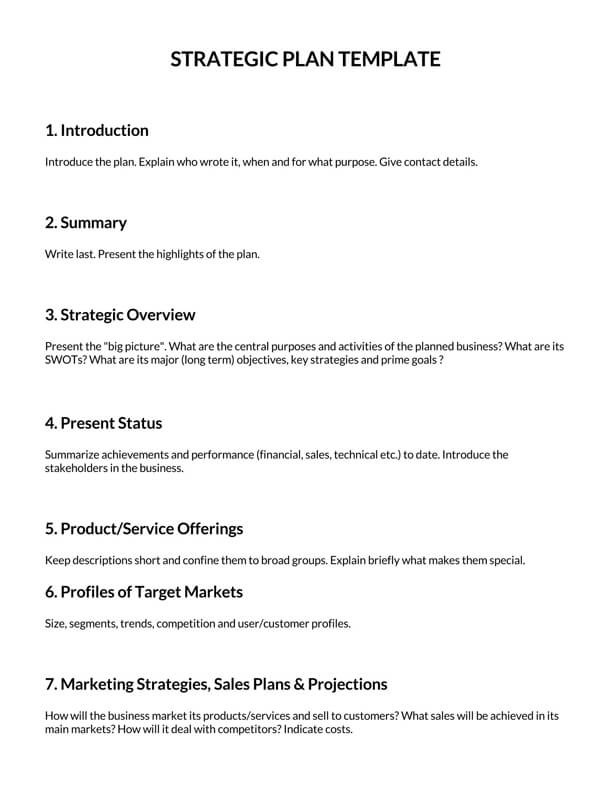
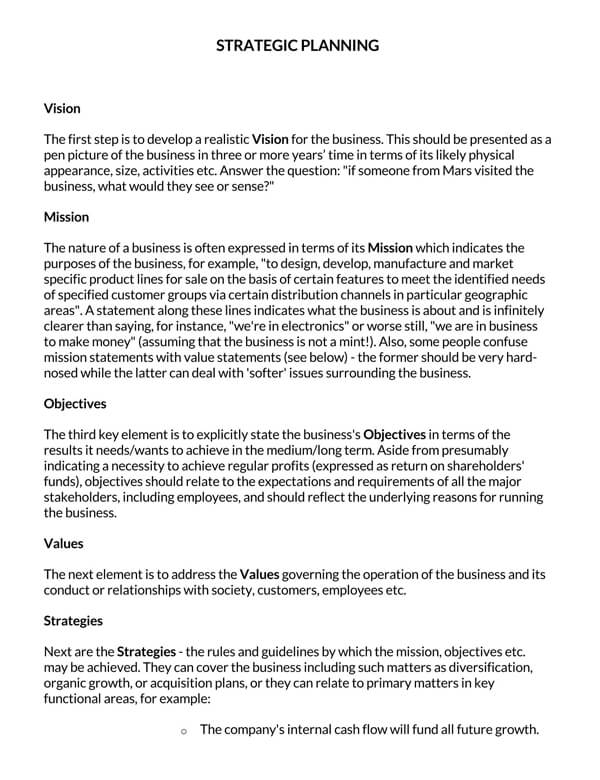
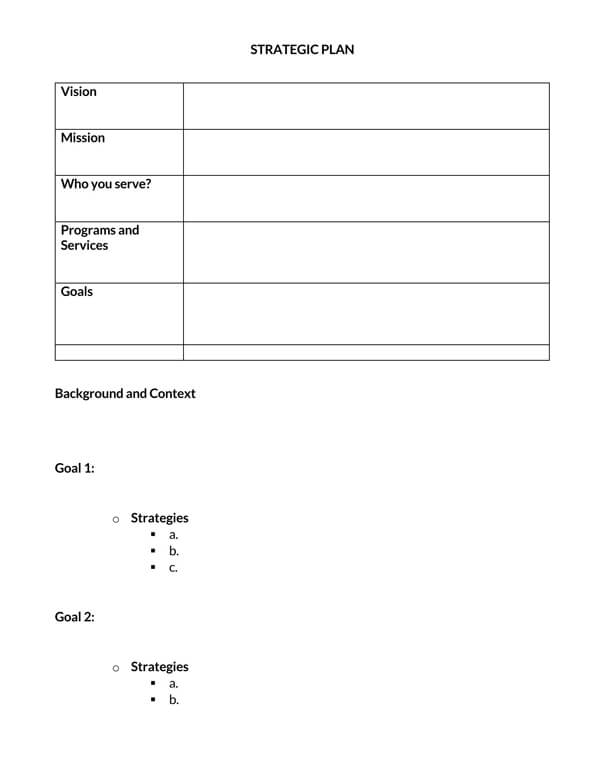
Benefits
The strategic plan serves as an indication of the current success or failure of the organization at any point in time. A measurement of the variation in the strategic position of an organization at any time can be made against the set expectation then, thus indicating a positive or negative variation. This enables early course correction by implementing pre-emptive changes to prevent derailment from the set path.
It is vital as a communication tool between the management of an organization, its stakeholders, and its employees. In a strategic plan, the purpose of the organization is clearly defined, and its expected future is stated. This is integral in decision-making processes, as only decisions, which bring the organization closer to its set goals, will be favored.
It also shows the best resource management techniques to employ at any point in time. By recognizing the organization’s expectations, the necessary resources that are to be focused on each section of the organization become apparent. Employees to be hired can be determined, and the commitment’s financial resources can be quantified.
Different Types
A strategic plan is intended for the same purpose in any instance in which it is applied, that is, to serve as a roadmap for achieving set goals. While this is the intention of any organization in using a template, the great variation in different organization types means that the plan developed for each organization will vary significantly. This can be due to the differences in purpose, size, and complexity of the organizations.
A template contains pre-defined sections for entering information, but due to the differences in the organizations which might use it, only a vague generalization is possible with a one-size-fits-all template. This necessitates the specialization of templates, with each one addressing a specific organization or a generalization of a specific group. Below are different types of template specializations:
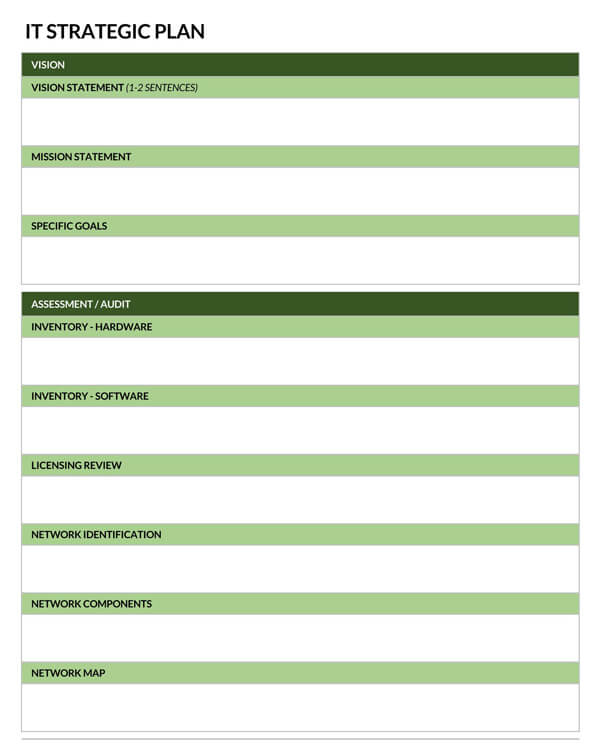
Strategic Business Plan Template
Download: Microsoft Word (.docx)
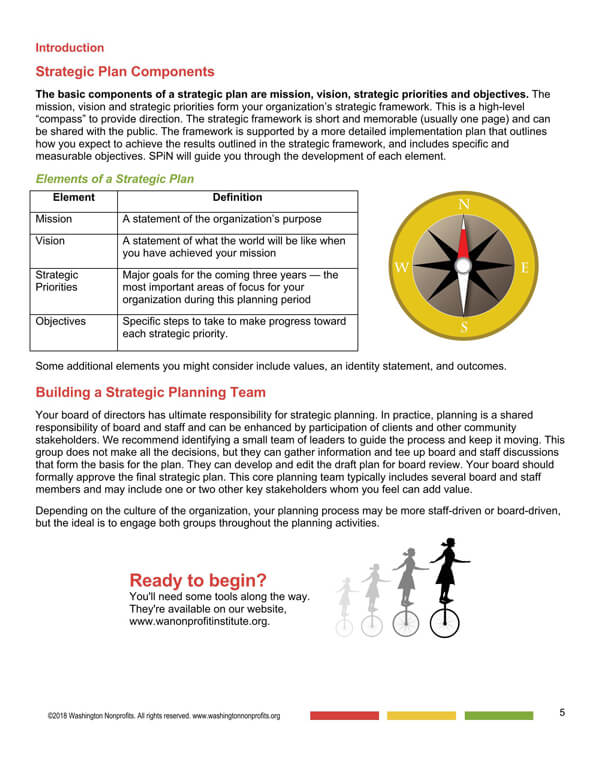
Non-Profit Strategic Plan Template
Download: Microsoft Word (.docx)
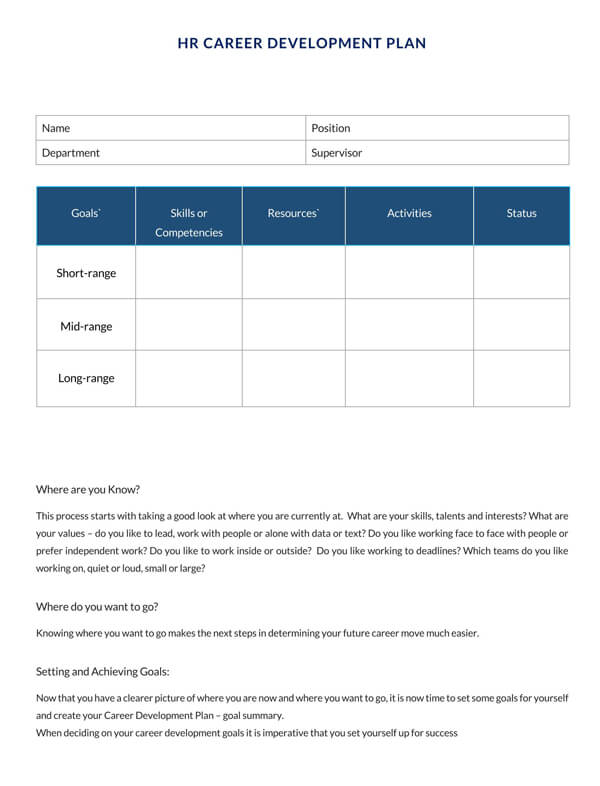
HR Strategic Plan Template
Download: Microsoft Word (.docx)
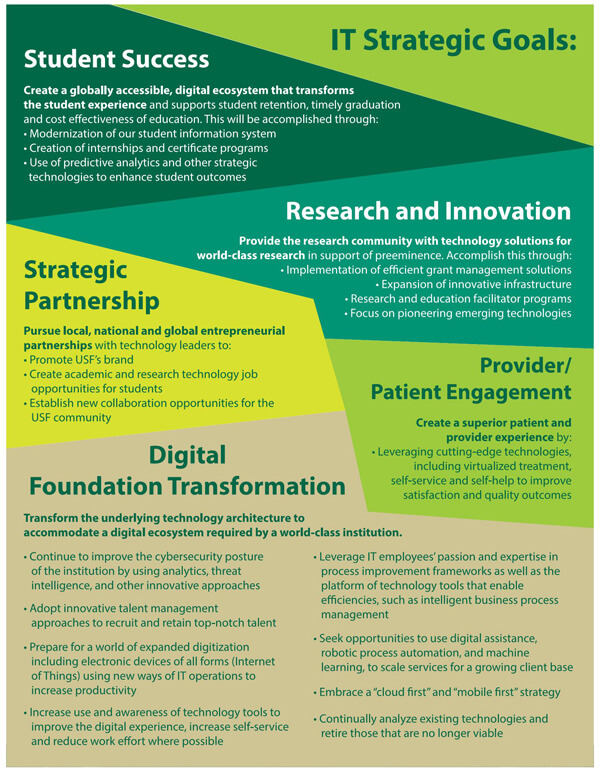
IT Strategic Planning Template
Download: Microsoft Word (.docx)
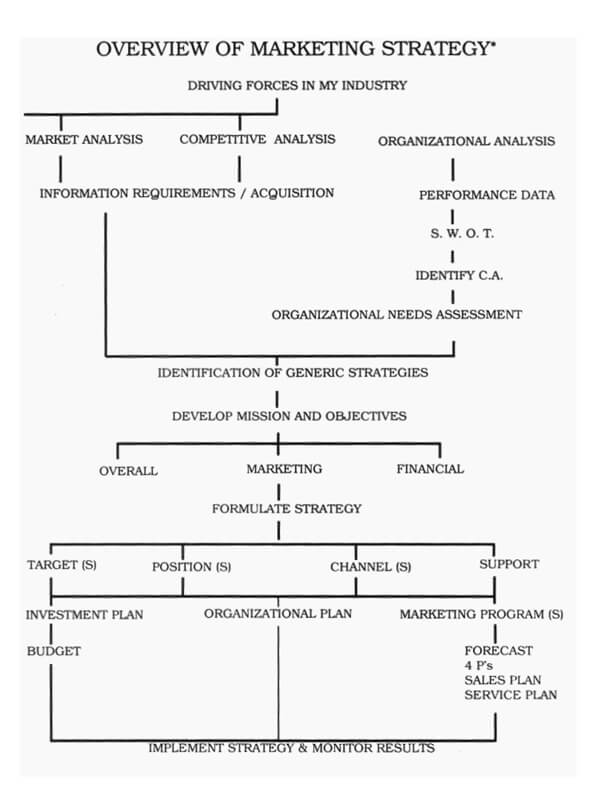
Strategic Marketing Plan Template
Download: Microsoft Word (.docx)
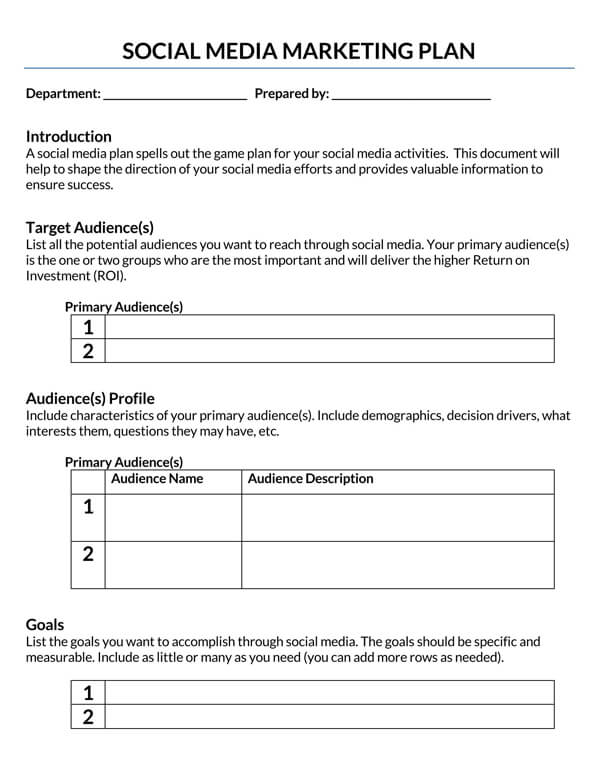
Social Media Strategy Plan Template
Download: Microsoft Word (.docx)
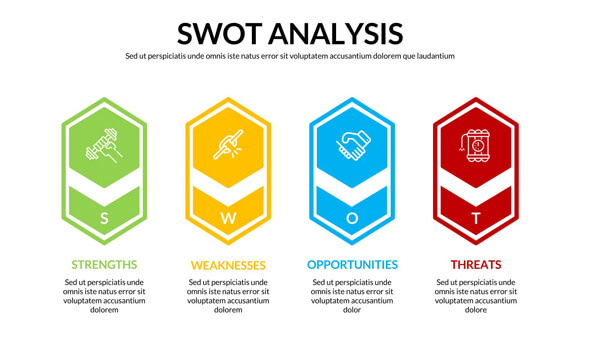
SWOT Analysis Strategy Template
Download: Microsoft Word (.docx)
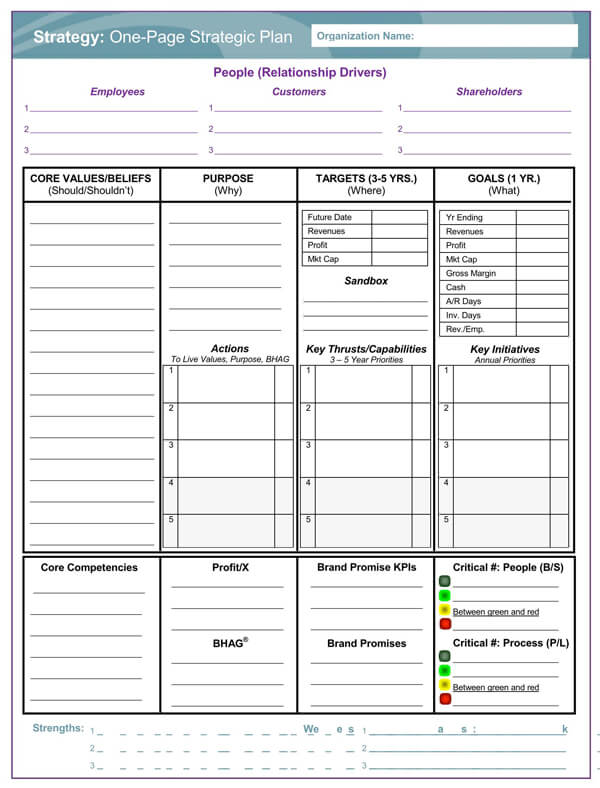
One-Page Strategic Planning Template
Download: Microsoft Word (.docx)
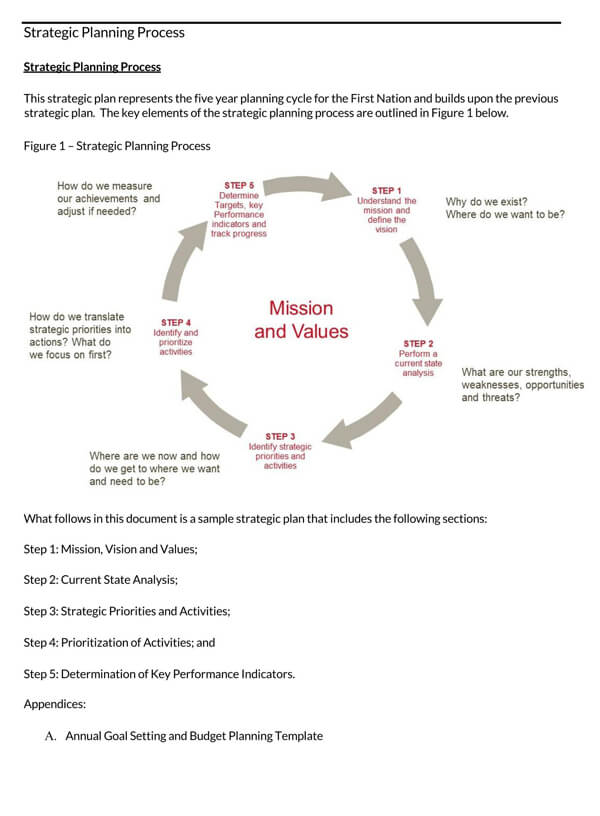
Strategic Vision Template
Download: Microsoft Word (.docx)
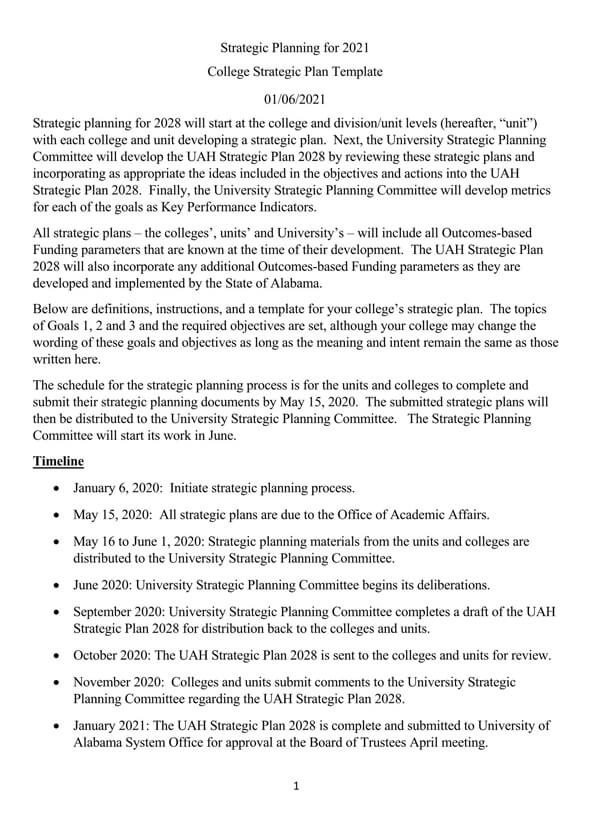
University Strategic Plan Outline
Download: Microsoft Word (.docx)

School Strategic Plan Template
Download: Microsoft Word (.docx)
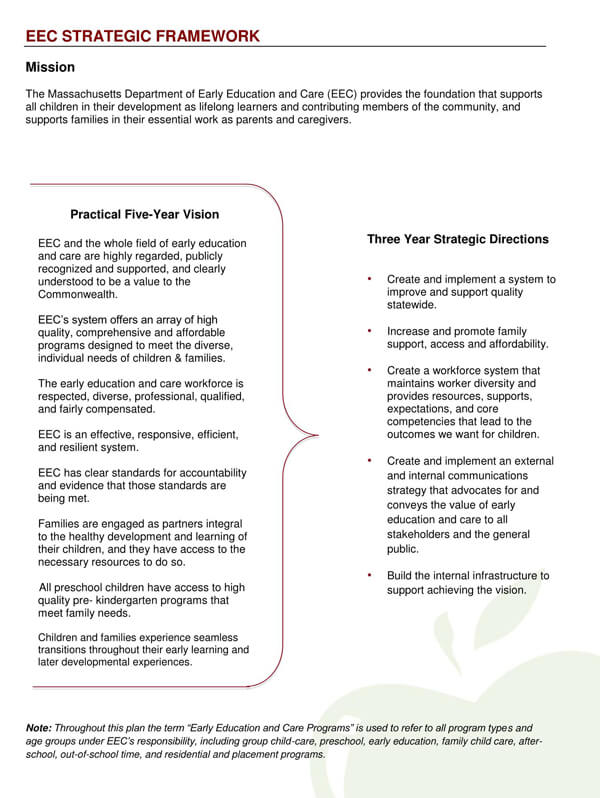
Departmental Strategic Plan Template
Download: Microsoft Word (.docx)
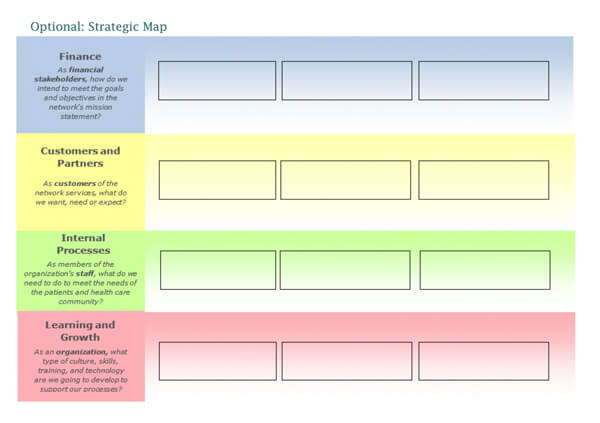
Project Strategic Plan Template
Download: Microsoft Word (.docx)
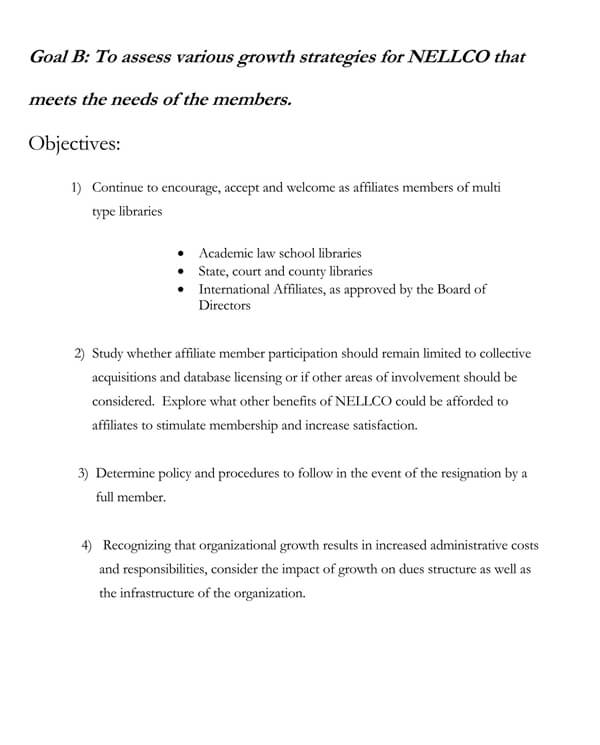
5-Year Strategic Plan Template
Download: Microsoft Word (.docx)
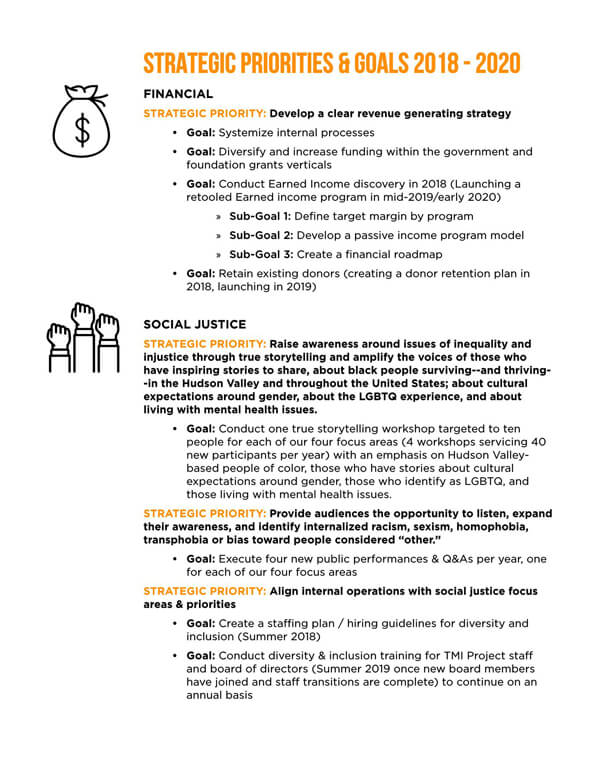
3-Year Strategic Plan Template
Download: Microsoft Word (.docx)
Steps To Make it Work
A strategic plan is a carefully planned document, as its influence is intended to be very significant and usually far-reaching. It works by providing an avenue to set goals, identify relevant information, and recognize how the information identified can be used to achieve the set goals. Thus, developing a template requires a precisely structured, procedural means of reconciling these three crucial actions.
Step 1: Determine your strategic position
A key feature that defines the potential success of any organization is the strategic edge it possesses relative to its competitors. The strategic position of an organization is what sets it apart from other organizations that offer similar services to it.
A strategic position is influenced by factors that can either be positive or negative. Positive factors such as the uniqueness of the service offered, the influence of the organization in the market it serves, or the ownership of revolutionary technology boosts the survivability and potential for success of an organization.
Negative factors such as a poor public image, terrible sitting location, or product inferiority damage a company’s strategic position, but also indicate where changes can be made to improve the chances for success. A determination of this combination of factors indicates the current strategic position of an organization which will be integral in developing a strategic plan.
Identify key strategic issues
The organization’s current position with respect to its competitors, the state of the market in which it exists, and its current strategic advantages have to be identified. Clear identification of the current situation of an organization gives a concise starting point and indicates the variation from a new desired position.
Identify opportunities and threat
Opportunities and threats are factors external to an organization that are both competing influences on its potential success or failure. Opportunities to an organization are possible avenues for attaining success, while threats can stymie, retard, or halt the progress of an organization. Identifying opportunities and threats present a means of recognizing the influences that can affect the progression of an organization to its desired outcome.
Assess current and future demands
The changes in the market that an organization serves determine the strategic position of the organization at any point in time. By studying the behaviour of the market, an assessment of the current demand and potential changes in the future can be established. Thus, resources can be reallocated at certain times to cope with changes, or opportunities can be exploited as the market changes to ensure a good strategic position is continually maintained.
Synthesize data
Data relevant to the organization that can be used to alter its course at any point in time should be synthesized. This includes a SWOT (Strength, Weaknesses, Opportunities, and Threats) and a PEST (political, economic, social, and technological) analysis. These analysis methods are means of assessing the internal and external factors that can influence the position of the organization in the market in which it exists.
Step 2: Prioritize your objectives
It specifies what an organization hopes to achieve. This is expressly stated as long-term goals and short-term objectives which contribute to achieving the overall goals. The specification of the organization’s goals provides a clear destination that is to be reached to qualify as a success. Objectives should be prioritized to determine which are to be accomplished at specific times and in what sequence. Objectives can be prioritized using one or more established objective-setting models.
Identify short SMART goals
Goals that are SMART (Specific, Measurable, Achievable, Relevant and Time-bound) should be stated to give a clear definition of what is expected. By contrasting the set goals, prioritization of which is expected at certain times can be made.
Key performance indicators (KPIs)
Key performance indicators are used to track and measure the success or failure of an organization in achieving its set goals. KPIs are certain criteria integral to an organization’s success. This can include the total monthly sales or the number of clients engaged in a fiscal year. By the monitoring of these criteria, the progress of an organization towards its set goals can be quantified.
Department goals
A multi-sectional organization may be made up of several departments, with each geared towards a particular function. The reconciliation of the function of each department determines the attainment of the set goals of the overall establishment. The goal for each department to reach to ensure a contribution to the overall organizational goals should be set in a plan.
Team member goals
The efforts of each individual in the organization should be towards the achievement of its set goals. Specifying goals for each team member ensures an adequate designation of roles and responsibilities that, when considered in collaboration with others, serve the general purpose.
Long-term objectives
Long-term objectives are outcomes that are desired at the expiration of a long duration of time. Thus, long-term objectives provide a constant indicator of where the organization wishes to end up after a prolonged period.
Step 3: Develop a strategy
Events, occurrences, and actions that must be realized for the objectives of the organization to be attained must be established. This provides a key set of points of what must be done to produce the desired outcome. The typical sets of standards by which such achievements are established include the following:
The vision statement
The vision statement represents the core values of an organization and how those values translate to realizable achievements. The vision statement contains a statement or a number of statements that explain why the organization exists.
The mission statement
The mission statement of an organization specifies the short-term achievements necessary for obtaining the long-term achievements specified in the vision statement. In addition, the mission statement details the working strategy of approaching a favorable situation that brings the organization closer to its long-term goals.
A problem statement
The problem statement identifies what the organization seeks to solve or a role it seeks to fill.
Step 4: Build a plan
A plan is the means of executing a strategy. It states the actions or sequence of actions that should be implemented at certain periods to bring about the desired result. It gives the specifics about how a defined strategy will be employed to accomplish a set of objectives. The plan should include a comprehensive itemization of what is needed to implement a strategy.
An elevator pitch or company description
The elevator pitch is a short, concise description of an organization that quickly helps others identify and understand what an organization is about, does, and hopes to achieve.
Organizational structure
The organizational structure gives an overview of the various departments and units that make up the organization. In addition, the organizational structure highlights the function of each unit and its contribution to the overall organizational objectives.
Target customers
An organization provides a service to a select group of people, and identifying those groups of people, and how to reach them, is instrumental in any plan.
Competitive and advantage analysis
The competitive and advantage analysis reviews the organization’s stance in relation to others offering a competing service.
Marketing plan
The marketing plan covers the means of ensuring that the service or product provided by an organization reaches its target customers and enough profit is made in the process.
Team
The team section relates the utilization of human resources in the planning model. This section details the type of people needed in the organization to fulfill one or more roles.
Operations plan
The operations plan illustrates the means of executing individual set-pieces which contribute to the overall organizational goal. This plan outlines how each project should start, what is to be done, and when it should be completed.
Financial projections
The financial projections indicate the financial viability of a particular enterprise. This requires the use of predictive models to anticipate the financial returns that can be potentially gained from a particular pursuit.
Executive summary
The executive summary is a recap of all the other sections itemized above. This is a brief consideration of each aspect to provide an easily understandable conclusion of the entire plan model. This will be useful for providing a quick description of the intended plan for an organization to relevant parties such as stakeholders.
Step 5: Execute and manage the project
This final section of the plan tracks the performance of the organization in relation to the specified standards in the developed plan. Using strategic measures and metrics, criteria that describe the progress of the organization can be specified and monitored to satisfy congruence between the actual and expected results.
Free Downloads
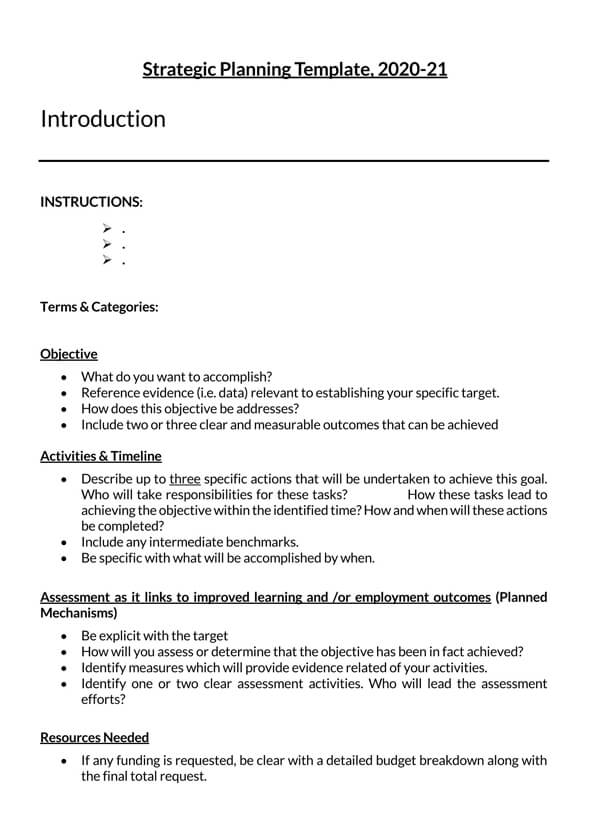
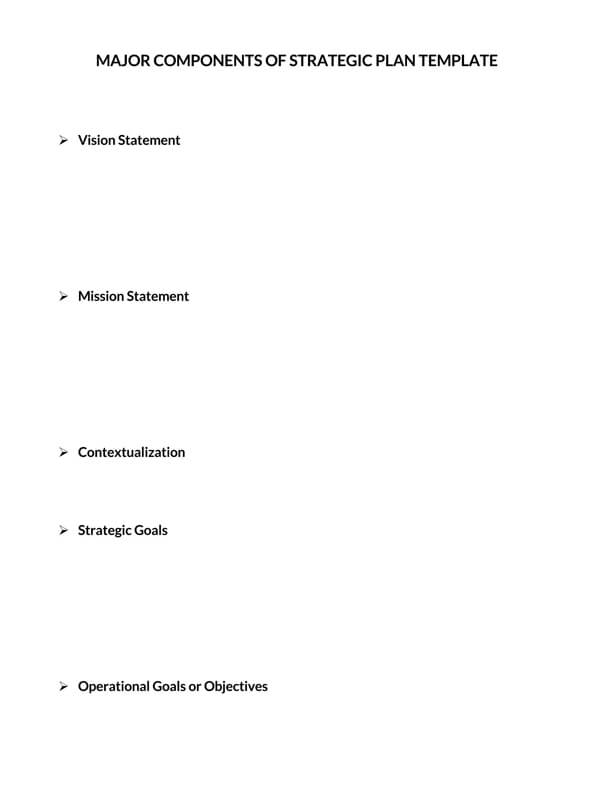
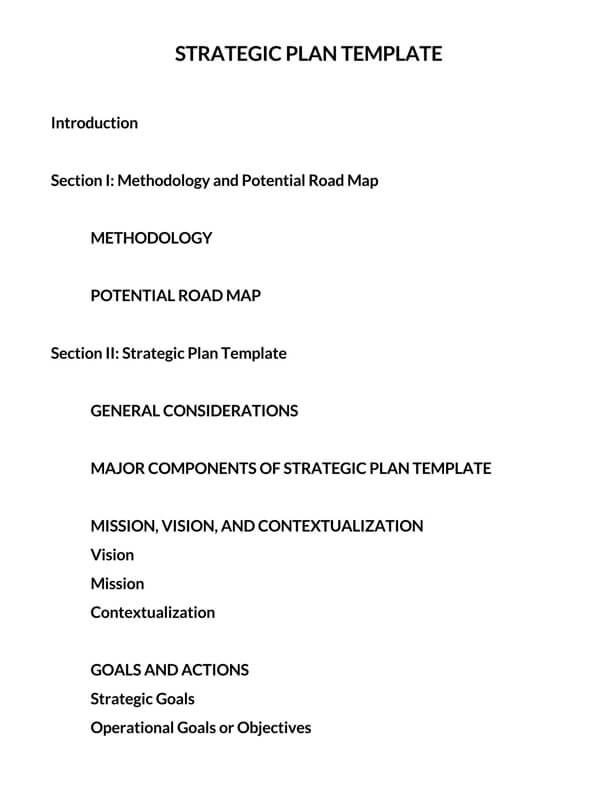
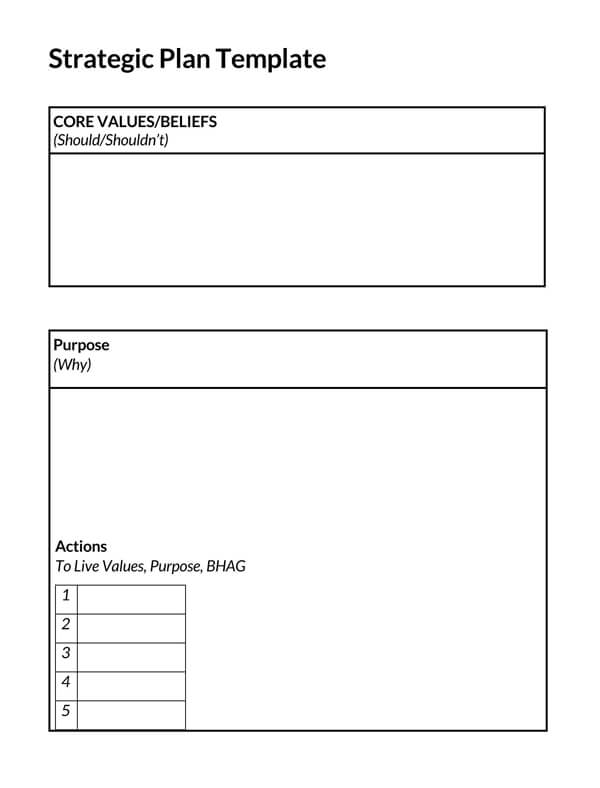
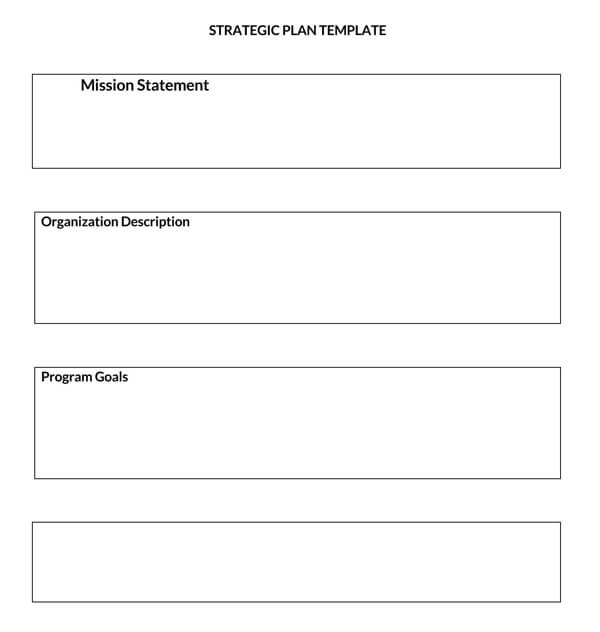
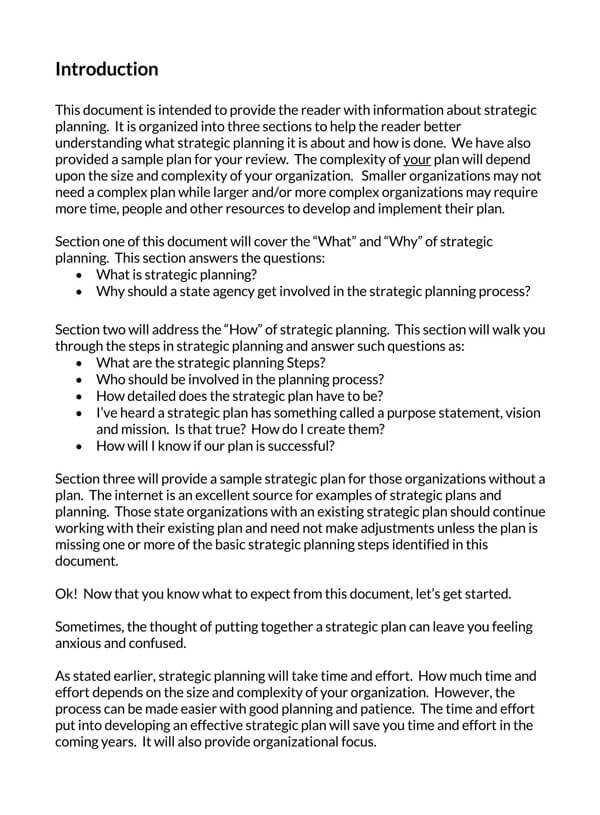
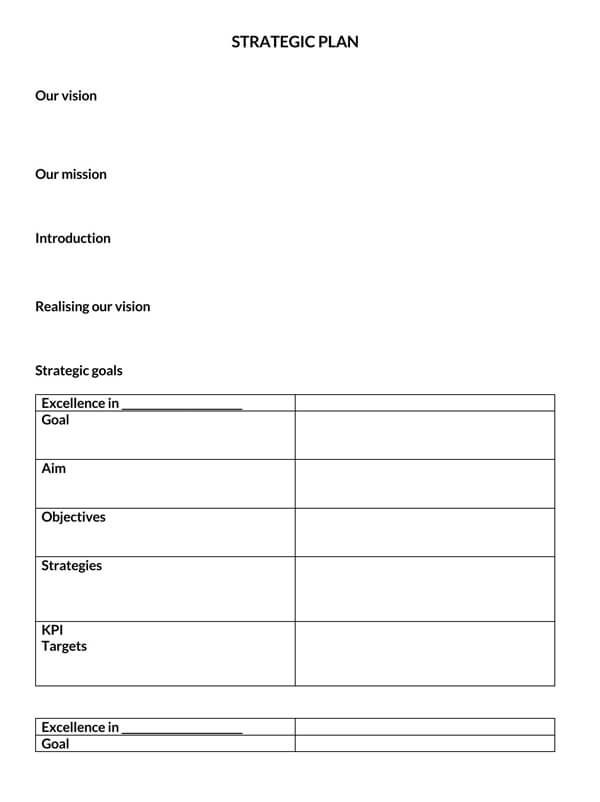
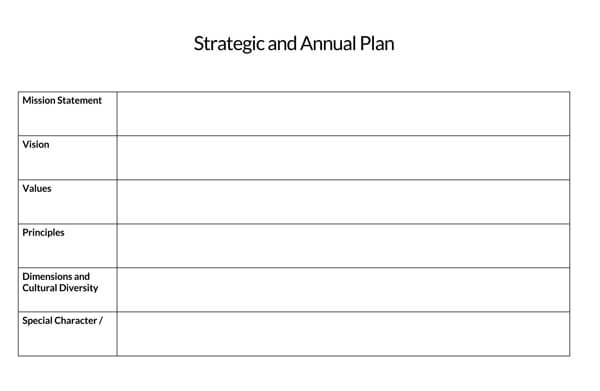
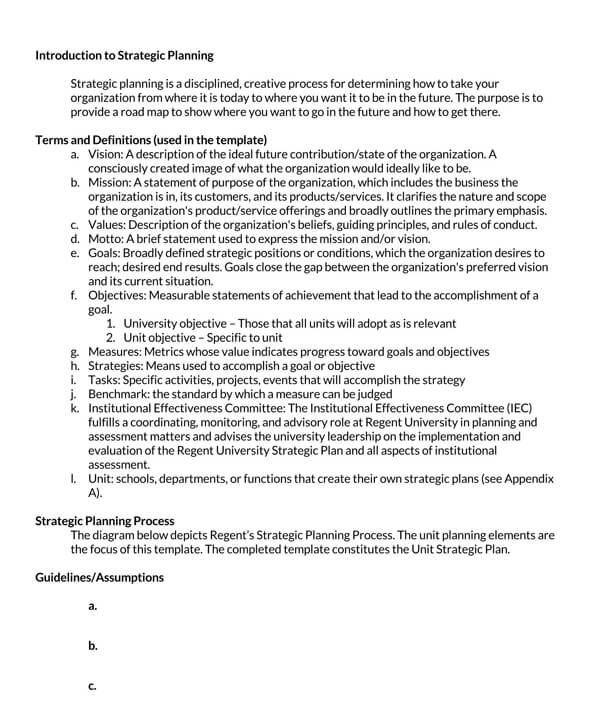
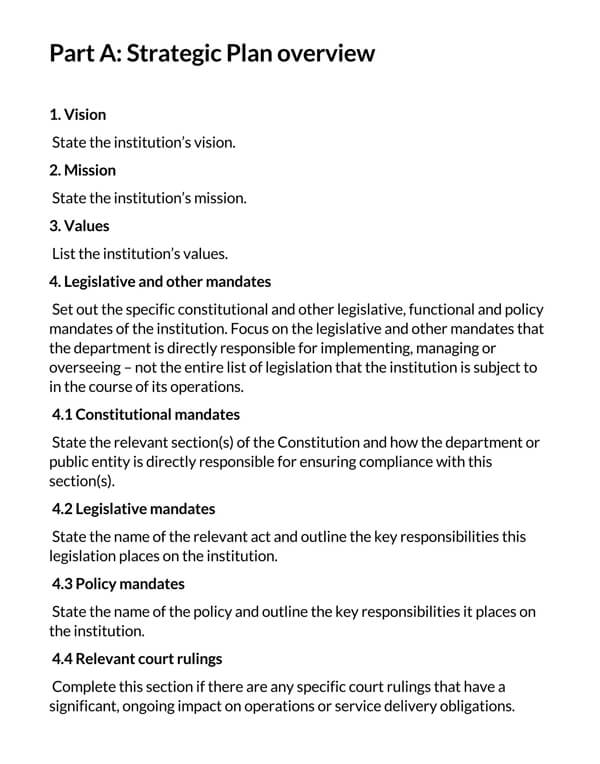
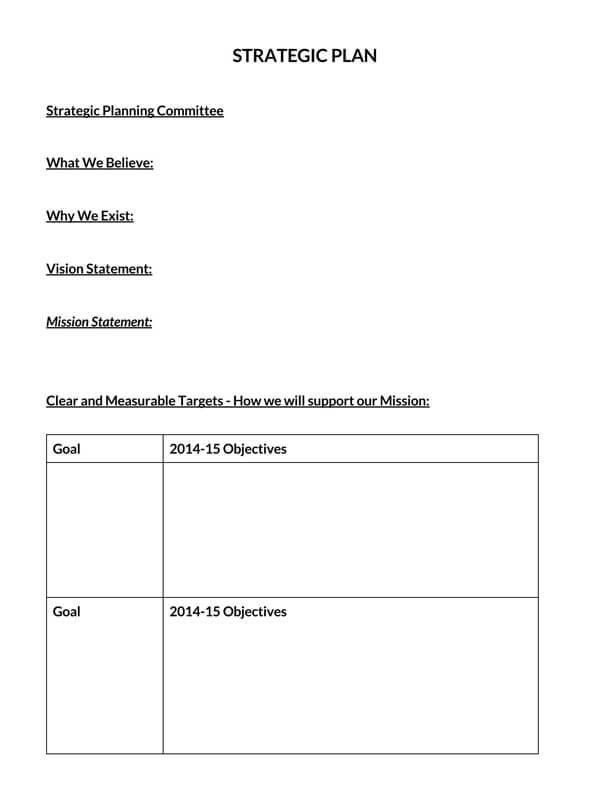
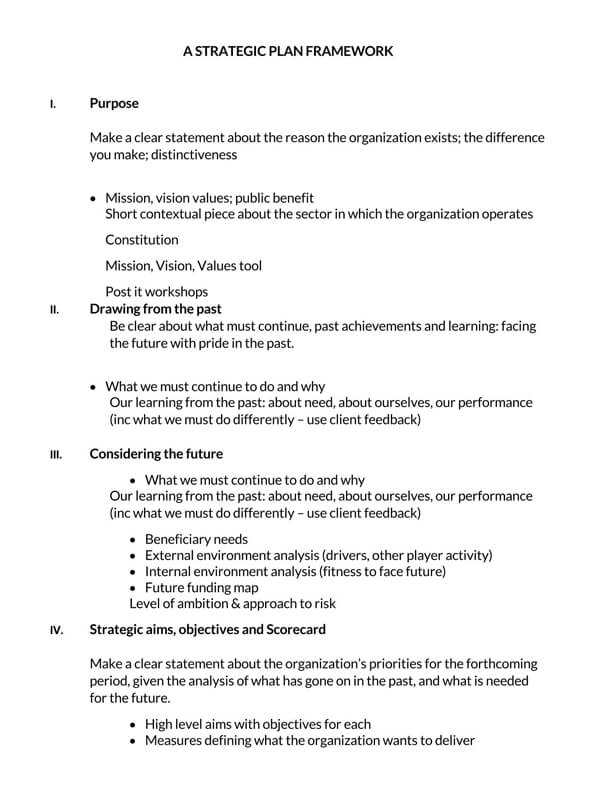
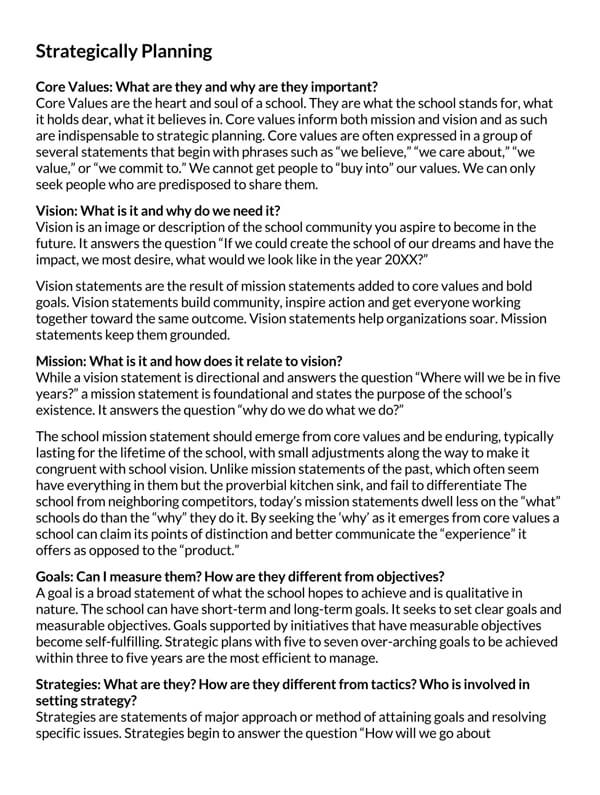
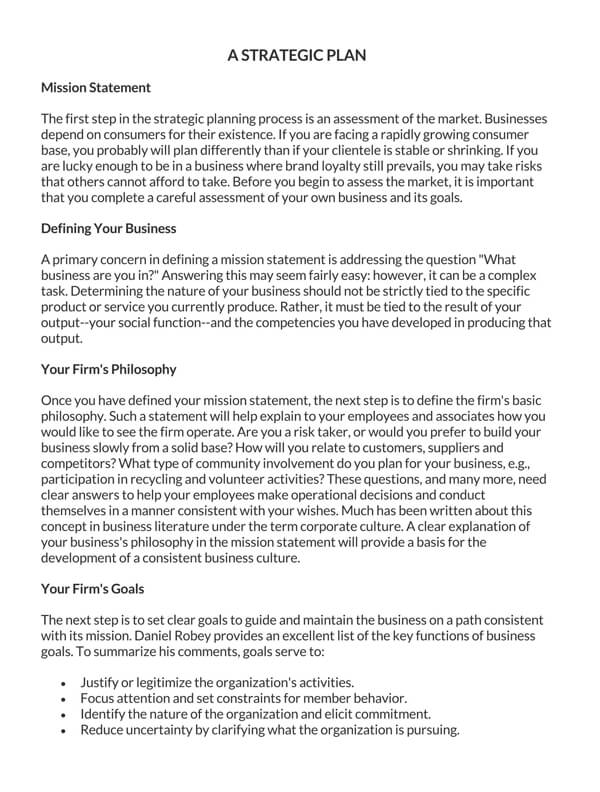
Frequently Asked Questions
The four types of planning are based on the variance in the set of objectives and the means of achieving them at each tier of management. This includes strategic planning at the top-tier, tactical planning at the middle tier, operational planning at the low-tier, and contingency planning at all tiers.
Strategic planning is focused on the distinct aspect of the operations of an organization. This creates levels which handle each aspect. This includes corporate-level strategic planning, business-level strategic planning, and functional-level strategic planning.
The elements are the key components that make up any strategic plan. This includes the mission and vision of the organization, the strategic assumptions of the competing influences on the organization and their impact, and the design, which outlines the actions to be executed to achieve the goals of the organization.
The key terms in strategic planning are words used to describe the most vital aspects of a strategic plan. This includes mission, vision, goal, objectives, action plan, measures, and metrics.
A strategic planning system is a structured process by which the various levels of management coordinate planning activities. This system is specific to each organization and must be tailored to fit each one. It can be designed by reconciling the communication of corporate-performance goals and the goal-setting process among an organization’s various tiers of management.
A strategic action plan details the exact actions or sequences of actions by which an outlined strategy will be realized. The action plan specifies how the set goals and objectives will be achieved in a strategic plan.
Strategic measures are observable values used to monitor an organization’s performance, while metrics quantify the selected measures.




